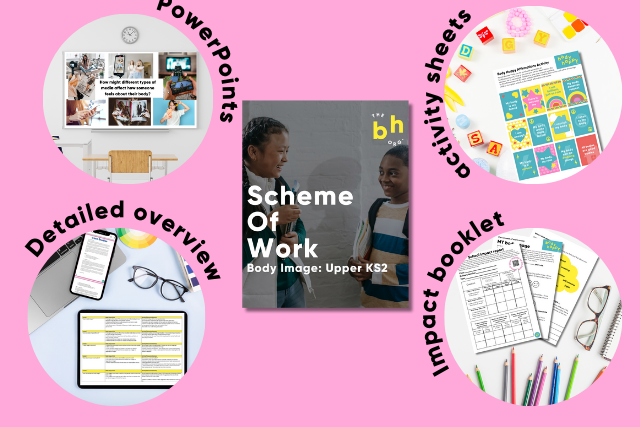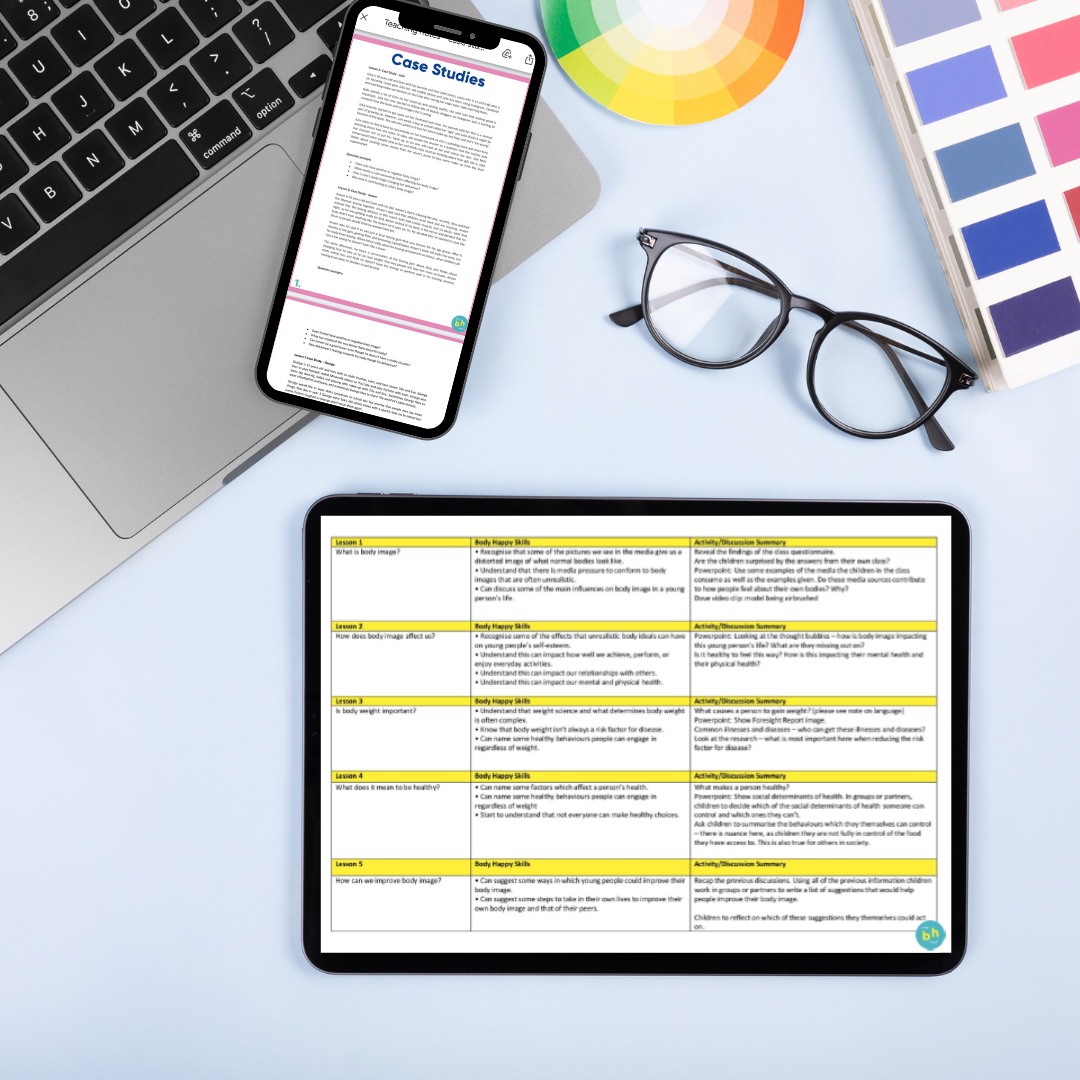SPOTLIGHT ON: Our Body Image Scheme of Work for age 9-11
Body image is not a "me" issue, it's a "we" issue. And our newly updated scheme of work for year 5 and 6 (ages 9-11) helps children learn about a subject fundamental to how they treat both their own bodies - and the bodies of others.
This scheme of work is more than just a lovely PSHE tool that impacts anti-bullying work, health and wellbeing, and citizenship. It's the foundation of a whole-school culture of positive body esteem. And we need your help to shout about it.
If you have a child at primary school then please help us spread the word. As a small social enterprise without big grant funding or glossy ad budgets, we rely on word of mouth to help us reach new people. Letting your school know about this new scheme is a great act of body image advocacy.
“
This isn’t just a scheme of work. It’s become a philosophy for staff and students to live by.
”
Doha English Speaking School used our original year 6 scheme in 2022 and 2023 and were awarded an outstanding inspection rating by the inspectorate for international schools, with their work on body image highlighted in the report. Read their case study story in our 2023 Impact Report here.
New impact tools included
Surpass Ofsted requirements and evidence your commitment to child wellbeing, safeguarding and inclusion with our new impact tools. Each scheme of work contains a template impact report, as well as impact sheets to use with the children. This will help you illustrate the tangible, measurable impact from the scheme and promote Pupil Voice in your school.
The resource consists of a five lesson scheme of work for years five and six (upper Key Stage 2), with 30-60 minute lessons that can be adapted into the school timetable.
Each scheme of work contains
💡 Overview - Detailed teaching notes and rationale mapped to national curriculum and Ofsted requirements, and PSHE Association guidelines.
💡 Impact report template - Pre and post student surveys and impact report template, for tangible impact measuring and reporting.
💡 Lesson slides - Multi-dimensional PowerPoint slides for ease of delivery, consisting of videos, quizzes and class discussion prompts.
💡 Activity sheets - Fun and engaging activity sheets for a range of different types of self-assessment and guided breakout learning.
This resource will help schools to…
✔ Surpass Ofsted requirements and evidence their commitment to child wellbeing, safeguarding and inclusion.
✔ Meet national curriculum requirements with ease - no time consuming planning or expert experience required to deliver these sessions.
✔ Adapt to any curriculum and complement your wider school approach to health and wellbeing, inclusion and anti-bullying.
✔ Accessible for all budgets and supports the social economy - this full scheme of work is only £24.99 and helps to fund other projects and initiatives that support student body esteem and wellbeing.
CHECK OUT THE LESSONS…
⭐ Lesson 1: What is body image?
Body image literacy - understanding the concept of body image and how our body image can be affected. Exploring media literacy and investigating how different forms of media can impact our body image.
Key words: body image, body appreciation, media literacy, critical thinking
⭐ Lesson 2: How does body image affect us?
Exploring appearance ideals - understanding how appearance ideals can impact our body image, and how our body image can impact our quality of life and how we show up in the world. Recognising that our own actions can also impact other peoples' body image too.
Key words: appearance ideals, body neutrality, body autonomy, bullying
⭐ Lesson 3: Celebrating body diversity
Body diversity - Understanding that bodies are made to be different, and exploring some of the reasons behind body diversity. Investigating concepts of representation and inclusion, and how these relate to body image.
Key words: body diversity, genetics, evolution, environment, inclusion, representation
⭐Lesson 4: What does it mean to be healthy?
Health behaviours - exploring how healthy behaviours are linked to body image, and understanding that when we feel good about our bodies we are more likely to treat them with kindness. Investigating different types of health behaviours that can make our bodies feel good. Introducing the concept of the social determinants of health and how this impacts our health behaviours.
Key words: health behaviours, social determinants of health, mental health, body esteem, body kindness
⭐ Lesson 5: How can we improve body image
Body image resilience and advocacy - building a body happy hero toolkit, to help look after our own body image and the body image of those around us.
Key words: body image resilience, positive affirmations, body image advocacy, culture change, empathy
WHAT MAKES OUR TEACHING RESOURCES SO SPECIAL?
We are the only body image organisation of our kind, with a multi-disciplinary team. Our resources are made by PSHE specialist teachers, for teachers, and then reviewed by our wider team which includes GPs, mental health support workers, a children's eating disorders dietitian, nutritionists and weight inclusive fitness trainers.
Our executive director and founder, Molly Forbes, is a journalist with over 15 years experience working in media, training and media literacy education, and the author of the book Body Happy Kids, published by Vermilion (an imprint of Penguin Random House).
We have a robust internal impact measurement framework and, what's more, this year we're working with researchers at The University of Lincoln on a formal study to assess part of our approach.
All of this experience, expertise and prioritisation of impact monitoring means that when we say our resources are evidence-based and expert-led, we can say it with confidence.




